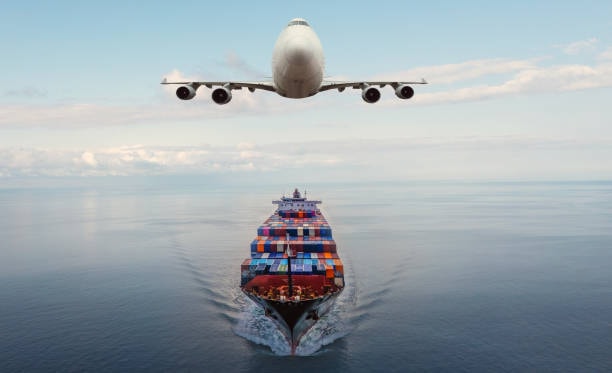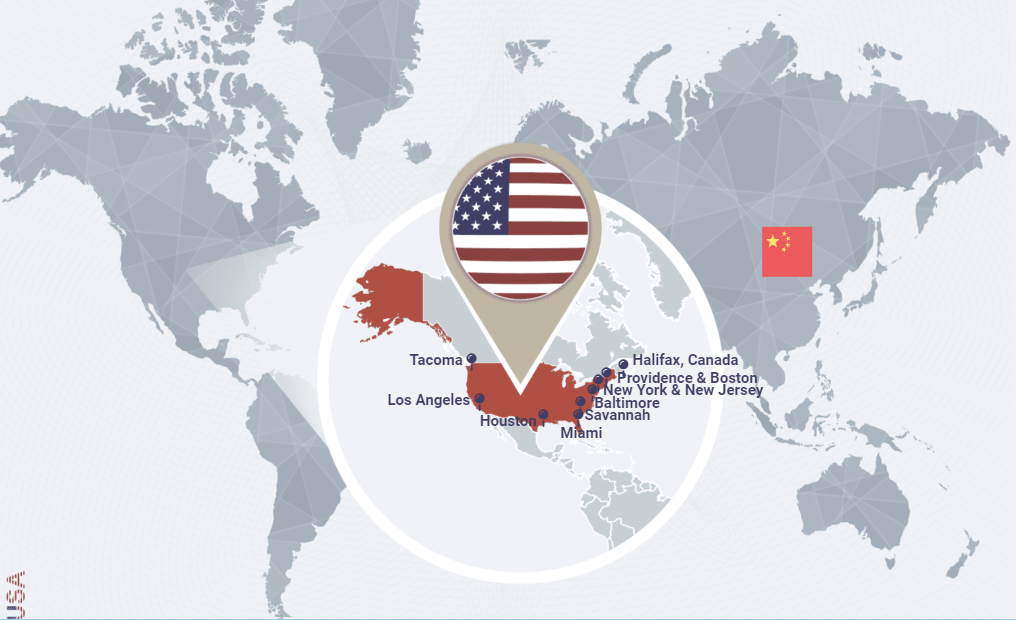Shipping Time from China to Canada | Sea, Air, Express & DDP Transit Guide (Ports, Customs, Costs)
1) Executive Snapshot: Typical Transit Windows
- Sea Freight (FCL/LCL): ~25–45 days door-to-door depending on lane, port congestion, and rail to inland Canada.
- Air Freight: ~3–7 days airport-to-airport; ~5–10 days typical door-to-door with pickup/clearance/delivery.
- Express Courier: ~2–5 days door-to-door for parcels and urgent SKUs (dimensional rules apply).
- DDP Door-to-Door: varies by mode; the key benefit is predictable landed timeline with duties/taxes handled.
2) What Really Drives the Timeline
- Origin & Destination: Shenzhen/Shanghai/Qingdao/Ningbo to Vancouver/Prince Rupert tend to be fastest for ocean; rail adds time to Toronto/Calgary/Montreal.
- Capacity & Seasonality: Peak space tightness (mid-Aug → mid-Oct and pre-CNY) lengthens both booking lead times and dwell at ports/CFS.
- Documentation Quality: Clean CI/PL/HS code alignment prevents inspection holds and valuation queries.
- Incoterms & Delivery Plan: EXW vs. FOB changes pickup scope; DDP vs. DAP shifts customs timing and responsibility.
- Risk & Exceptions: Weather, strikes, and blank sailings can extend schedules; build buffers in PO calendars.
3) Sea Freight Transit: How to Read the Calendar
Ocean remains the backbone for bulk cargo. To map realistic timelines, separate the journey into four segments: factory handling, export leg, arrival/clearance, and inland delivery.
3.1 Typical Port Pair Windows (Port-to-Port)
| Origin (China) | Destination (Canada) | Ocean Sailing (Days) | Notes |
|---|---|---|---|
| Shenzhen (Yantian/Shekou) | Vancouver | 14–18 | Fast Pacific leg; add 3–7 days for terminal dwell. |
| Shanghai (Yangshan) | Vancouver | 15–20 | High frequency; buffers reduce rollover risk. |
| Qingdao | Montreal | 22–28 | Longer route; winter ops may add variability. |
| Ningbo-Zhoushan | Toronto (via Vancouver + rail) | 16–20 + 5–8 rail | Plan rail slots during peak demand. |
| Tianjin | Halifax | 23–30 | Atlantic entry; watch berth windows in peak. |
3.2 Door-to-Door Planning Checklist
- Pickup & Stuffing: 1–3 days (factory ready, carton labels, VGM, CY cut). LCL adds CFS consolidation dwell.
- Export Clearance: 0.5–2 days (paperwork accuracy is key).
- Ocean Leg: see table above; add weather/slack for winter Pacific crossings.
- Arrival & Clearance in Canada: 2–5 days typical (quicker with pre-filed entries and correct HS codes).
- Inland to Final: rail/truck 1–7 days depending on province and appointment rules (e.g., DC/FBA).
3.3 FCL vs. LCL: Time Trade-offs
- FCL: fewer handoffs, less CFS dwell, faster pull/return once free time opens.
- LCL: best for 1–12 CBM, but consolidation + deconsolidation adds 2–6 days relative to FCL.
4) Air Freight Transit: Fastest Path to Availability
Air compresses lead time and inventory risk. The practical calendar is airport slot + export docs + uplift + Canadian entry + last-mile.
4.1 Airport Pair Windows (Airport-to-Airport)
| Origin (China) | Destination (Canada) | Transit (Days) | Typical Use Case |
|---|---|---|---|
| Shanghai (PVG) | Toronto (YYZ) | 3–5 | High-value electronics, spare parts. |
| Guangzhou (CAN) | Vancouver (YVR) | 3–5 | Fashion, launch replenishments. |
| Beijing (PEK) | Montreal (YUL) | 3–6 | Mixed B2B components. |
| Shenzhen (SZX) | Calgary (YYC) | 4–6 | Western Canada distribution. |
4.2 Door-to-Door Timing
- Pickup & Export: 0.5–2 days incl. screening and handover.
- Flight + Arrival: 1–3 days (direct vs. transshipment).
- Customs & Delivery: 1–3 days (faster with pre-clearance & broker coordination).
5) Express & DDP: When Time Certainty Beats Price
Express (DHL/FedEx/UPS) achieves 2–5 days door-to-door for parcels and light cargo with published service guarantees. DDP wraps pickup, transport, entry, and duties/taxes into one timeline, which makes forecasting easier for first-time or non-resident importers.
6) Seasonal Strategy: Pick Your Window
- Peak Season: mid-August to mid-October (pre-holiday) and pre-Chinese New Year. Book earlier, split POs, and consider partial air.
- Intra-month Timing: late-month can be cheaper (carriers fill space); early-month GRIs can raise costs and extend dwell.
- Buffering: keep 5–10 days buffer on ocean and 1–3 days on air during peaks.
7) Documents that Keep You Moving
- Commercial Invoice: accurate seller/buyer, currency, Incoterms, HS codes, unit value.
- Packing List: carton count, dimensions, net/gross weight, SKU refs.
- B/L or AWB: issued by carrier; must align with CI/PL details.
- Certificates/Permits: where applicable (e.g., food/health products, batteries).
- Insurance Policy: all-risk recommended; include value + freight + 10% uplift.
8) Packaging That Survives the Pacific
- Use export-grade cartons, edge protectors, and moisture barriers; desiccants for winter/spring sailings.
- ISPM-15 compliant pallets; even weight distribution; avoid void space to control volumetric weight in air.
- Carton & pallet labels: SKU, PO, carton #, dimensions, “Made in China”, and handling marks.
9) Cost vs. Time: How to Choose
- Air if stock-out risk > time savings (launches, promos, high-margin SKUs).
- Ocean FCL for stable replenishment & lowest unit cost.
- LCL for trials or low volume (accept extra CFS dwell).
- Hybrid: split shipments—air for initial availability, ocean for follow-on volume.
10) Example Transit & Cost Overviews (Indicative)
| Mode | Indicative Cost | Typical Transit | Best Fit |
|---|---|---|---|
| Sea FCL 20’ | USD 2,550–3,800 | ~32–42 days door-to-door | Bulk, pallets, furniture |
| Sea FCL 40’ | USD 3,050–5,550 | ~32–42 days | High volume wholesale |
| LCL (per m³) | USD 150–250 | ~35–50 days | 1–12 m³ mixed cargo |
| Air Freight (per kg) | USD 6.5–15.5 | ~5–10 days door-to-door | Urgent, high value |
| Express (per kg) | USD 10–20 | ~2–5 days | Samples, small orders |
| DDP (per kg/CBM) | USD 6–15 / 200–300 | Varies | All-in simplicity |
11) Lane Examples: Origin to Canadian Gateways
- Shenzhen → Vancouver: ocean ~18–25 days sailing; door-to-door ~25–35 days; air ~3–5 days A2A.
- Shanghai → Toronto: ocean via Vancouver + rail ~28–38 days to ramp; door-to-door ~32–42 days; air ~3–5 days A2A.
- Qingdao → Montreal: ocean ~22–30 sailing; D2D ~30–40 days; air ~4–7 days.
- Ningbo → Calgary/Edmonton: ocean + rail ~30–40 days; air ~4–7 days to YYC/YEG.
12) Amazon FBA & Retail DC Considerations
- Match FBA label & pallet rules; book appointments where required.
- For launches, split air + ocean; for replenishment, consolidate to 40HQ.
- Use DDP to simplify duties/taxes and reduce delivery rejections.
13) FAQ: Shipping Time & Practicalities
How long does sea freight take from China to Canada?
Plan ~25–45 days door-to-door depending on lane, season, and inland rail. Port-to-port Pacific legs can be ~14–20 days.
How long does air freight take from China to Canada?
Plan ~3–7 days airport-to-airport. Including pickup, clearance, and final mile, door-to-door is commonly ~5–10 days.
What is the fastest option?
Express courier delivers small parcels in ~2–5 days door-to-door with reliable tracking and time-definite windows.
How do peak seasons affect timing?
Mid-Aug → mid-Oct and pre-CNY increase dwell and space constraints; book early and build buffers.
Which ports/airports are best?
Ocean: Vancouver/Prince Rupert for speed, Montreal/Halifax for eastern coverage. Air: YYZ/YVR/YUL for capacity and connections.
What documents reduce delays?
Clean CI/PL with correct HS codes, accurate values, and consistent details across all transport docs.
14) Work with Red Flag Freight Forwarding
Whether you are booking your first pallet or optimizing a high-volume replenishment program, our teams in China and Canada design calendars that fit your margin and SLAs—then execute to plan.



